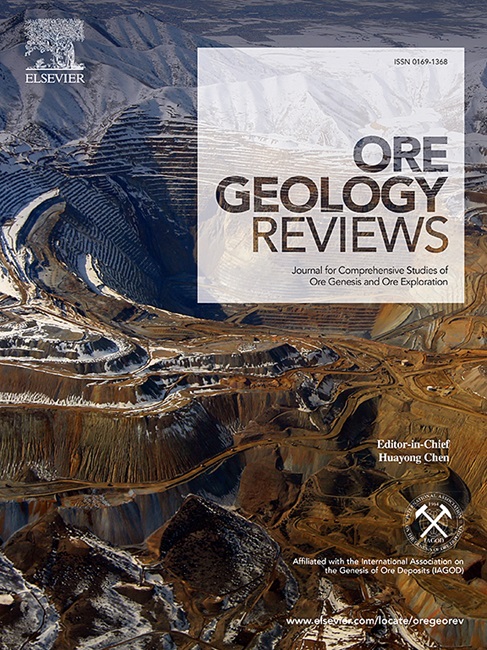Constraints of reducing media on uranium mineralization in the uranium-bearing rock systems of the southern Songliao Basin
IF 3.2
2区 地球科学
Q1 GEOLOGY
引用次数: 0
Abstract
The southern Songliao Basin harbors uranium-bearing rock series characterized by two distinct sedimentary environments: humid and arid, each displaying marked variations in the abundance of reducing agents and the spatial distribution of uranium mineralization. This comprehensive study meticulously delves into the petrology, mineralogy, and petrogeochemistry of the Lower Cretaceous Fuxin Formation (humid environment) and the Upper Cretaceous Quantou and Yaojia Formations (arid environment). Within these uranium-rich rock series, uranium minerals predominantly reside within coarse clastic rocks, particularly occupying interstitial spaces between clastic particles and their edges, with minor occurrences within mineral interiors or adsorbed on surfaces. Notably, the Fuxin Formation stands out for its stronger association of uranium minerals with carbonaceous detritus and pyrite. The unusually abundant internal reducing agents, like carbonaceous detritus and pyrite, within the Fuxin Formation’s uranium-bearing rocks, impede the development of interlayer oxidation zones, resulting in uranium mineralization concentrated near basin margins. Conversely, the Quantou and Yaojia Formations exhibit a relative paucity of internal reducing agents, while external sources like coal seams and hydrocarbon reservoirs accumulate centrally within the basin. This configuration promotes the extensive spread of interlayer oxidation zones and uranium mineralization deep into the basin’s interior. In essence, the abundance and spatial distribution of reducing agents determine the extent and pattern of interlayer oxidation zones and uranium mineralization. Both internal and external reducing agents intricately interact to orchestrate the uranium mineralization processes.

求助全文
约1分钟内获得全文
求助全文
来源期刊

Ore Geology Reviews
地学-地质学
CiteScore
6.50
自引率
27.30%
发文量
546
审稿时长
22.9 weeks
期刊介绍:
Ore Geology Reviews aims to familiarize all earth scientists with recent advances in a number of interconnected disciplines related to the study of, and search for, ore deposits. The reviews range from brief to longer contributions, but the journal preferentially publishes manuscripts that fill the niche between the commonly shorter journal articles and the comprehensive book coverages, and thus has a special appeal to many authors and readers.
 求助内容:
求助内容: 应助结果提醒方式:
应助结果提醒方式:


